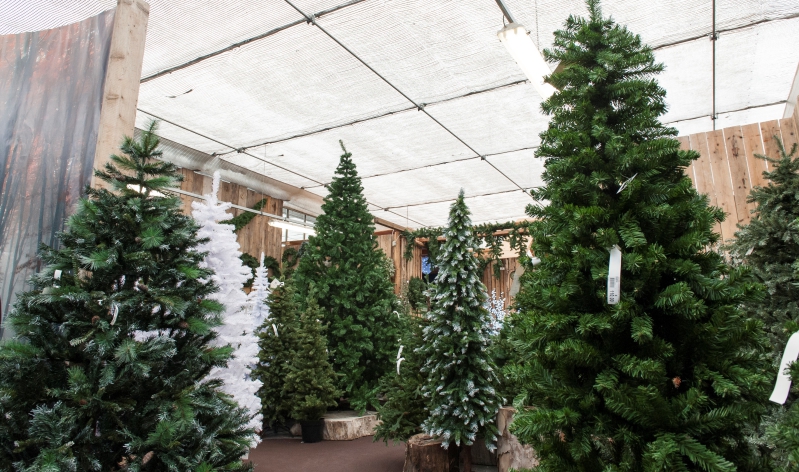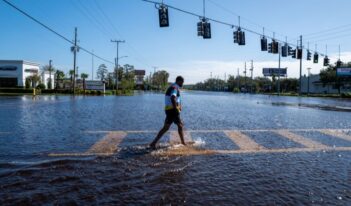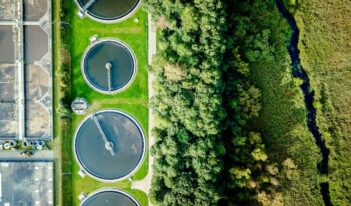
Chemicals in artificial Christmas trees may pose health and environmental risks.
Opting for an artificial Christmas tree this year?
Chances are, the answer is “yes.” Over 80 percent of U.S. households that put up a Christmas tree will choose an artificial tree over the natural, pine-needle alternative.
Many consumers cite safety as a major reason for going the artificial route. Real Christmas trees catch fire at approximately three times the rate of artificial trees, while most artificial Christmas trees are made of polyvinyl chloride (PVC), a widely used, fire-retardant chemical.
Artificial Christmas trees also are known for their soft-to-the-touch pine needles. This kid-friendly texture comes from the high number of phthalates mixed in with PVC during the manufacturing process. Phthalates are a broad class of chemicals that give PVC its plasticity.
Despite the promise of reduced fire risk and a softer touch, some consumer and environmental rights advocates insist that artificial Christmas trees are not a truly safe, risk-proof option. They warn that artificial Christmas trees pose health risks for consumers because of the chemicals added to PVC during production.
So far, U.S. regulators do not yet agree.
The U.S. Environmental Protection Agency (EPA) has recognized that “high exposure” to phthalates may raise health concerns. In recent years, some researchers have begun to link high degrees of phthalate exposure to lowered fertility, certain cancers, and testosterone reduction.
In 2017, with these risks in mind, the U.S. Consumer Product Safety Commission banned many phthalates from use in manufacturing toys for small children. China—where approximately 80 percent of U.S. artificial Christmas trees are imported from—has imposed similar restrictions.
Some epidemiologists are calling for phthalate bans across all consumer products. But for now, phthalate regulations only reach the toys under the tree, not the tree itself.
In addition to concerns about phthalates in artificial Christmas trees, some consumer advocates allege that these trees’ production and disposal increase global pollution. For example, artificial trees tend to last only ten years, on average. Since PVC is not recyclable, disposed trees either waste away in landfills or are incinerated. Environmental experts note that carcinogenic dioxins are emitted into the air when products with PVC are burned.
Dioxins released into the air through incineration as well as in the production of artificial trees pose substantial health risks for workers and residents in surrounding communities. And experts note that low-income residents and communities of color tend to bear the brunt of health risks associated with PVC emissions, as these groups are disproportionately more likely to live near both PVC factories and incinerators.
In 2012, EPA issued a rule mandating emission caps for U.S. factories producing PVC. The rule aimed to reduce hazardous waste pollutants—including dioxins—by over 260 tons per year. Since then, environmental advocates have continued to push for more comprehensive regulation. In December 2020, environmentalists won a partial victory. EPA issued a proposed rule that would decrease hazardous air pollutants by an additional 34 tons per year.
These EPA rules would limit the release of dioxins during the production of the small proportion of artificial trees manufactured in the United States, but much less agency attention has been paid to emissions released during artificial tree disposal. In May 2021, the Center for Biological Diversity sued EPA under the Resource Conservation and Recovery Act, requesting that the agency classify discarded PVC as hazardous waste and regulate it accordingly.
No such regulations have yet been issued.
In addition to dioxin pollution, some consumer groups argue that artificial Christmas trees present risks of lead exposure—but the validity of these claims remains uncertain.
Lead exposure, even in small amounts, threatens health. But the U.S. Food and Drug Administration notes that “most intentional uses of lead are now banned in the United States.” Since 1976, lead use in paint, dust, soil, air, and water has been regulated by the Toxic Substances Control Act.
Notably, federal lead regulations do not extend to plastics. And similar to phthalates additives, small amounts of lead have historically been added to PVC during production.
The American Christmas Tree Association, a non-profit dedicated to providing the public with information on Christmas tree purchasing options, has reportedly said that “leaded PVC is no longer used at all in its members’ products.” The National Tree Company, a tree importer and wholesaler, agrees that lead exposure should not worry potential buyers. Yet in California, Proposition 65 still requires warning labels on imported artificial Christmas trees.
Over the last thirty years, consumer exposure to lead has significantly declined. But it remains unclear whether existing regulatory controls are truly enough to curb all lead additives in plastics.
Despite these safety considerations, the sale of artificial Christmas trees continues this December. Although these trees will bring much joy this holiday season, some advocates suggest that they may be worthy of greater regulation for Christmases to come.



